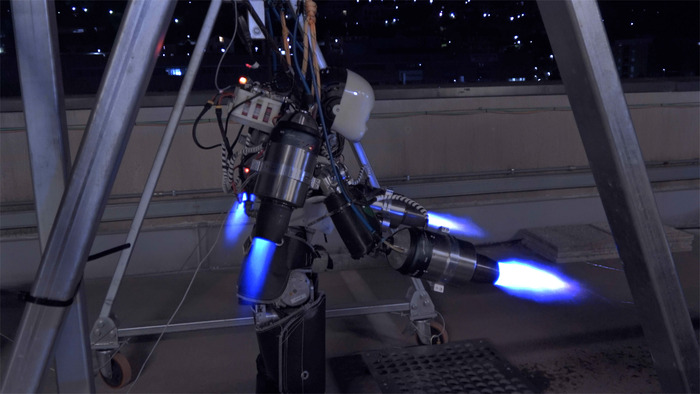Researchers at the Italian Institute of Technology (IIT) in Genoa, Italy, in collaboration with the Politecnico di Milano, have designed and built iRonCub3, the first humanoid robot with a propulsion jet capable of flight. The team, coordinated by Daniele Pucci, was able to lift the robot up to 50 centimeters above the ground and perform controlled maneuvers.
The robot weighs about 70 kilograms and is equipped with four jet engines: two mounted on its arms and two built into a backpack on its back. To achieve the results published in Nature Communications Engineering, the study authors focused in particular on dynamic balance during flight, addressing complex challenges related to humanoid morphology, which is much more articulated than that of traditional drones.
The project required two years of work and extensive studies of aerodynamics applied to a structure similar to that of the human body. A key role was played by Artificial Intelligence, which was used to estimate in real time all the aerodynamic forces involved, ensuring stability and control.
“Aerodynamics plays a key role: the exhaust temperature of the turbines can reach 800 degrees and the gas emitted approaches the speed of sound,” Pucci explains. “The entire robotic platform must therefore be able to evaluate flight dynamics in real time. Experimenting on these robots is fascinating, but also dangerous, and leaves no room for improvisation.”
The next goal is to apply this technology to search and rescue missions or exploration of extreme environments where direct human intervention is impossible or too risky.












